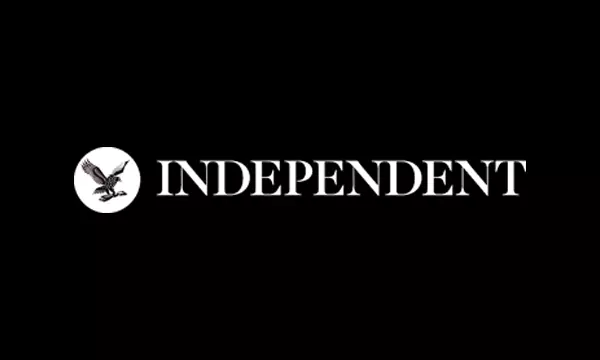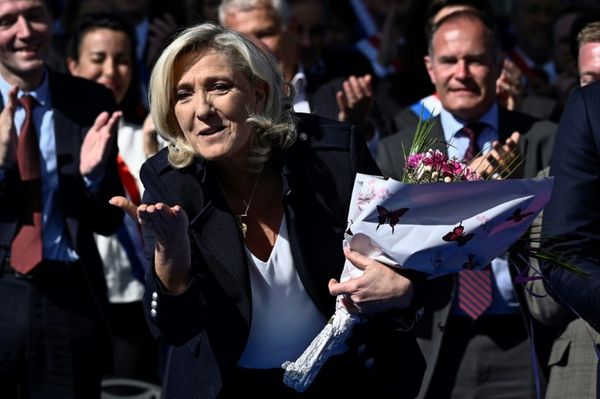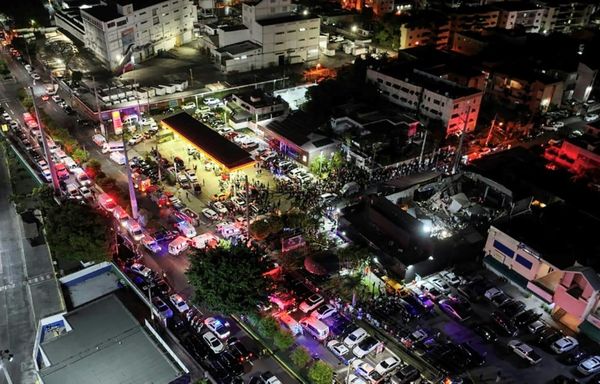
Prime Minister Narendra Modi’s visit to Kuwait, his last foreign engagement of 2024, where he collected another “highest civilian honour” from an Arab state, helped Delhi work up some cheer into an otherwise sobering year for India's engagement with the world.
If 2023 was a year in which the world seemed to be eating out of India’s hand, dazzled by the spectacle that Modi put up at the G20 summit, 2024 was a year of pushbacks and cul-de-sacs for Delhi, in the region and beyond.
Here are five main issues from 2024 that will continue to shape India’s foreign policy in the coming year:
Neighbourhood nerves
The ouster of Sheikh Hasina, and her Awami League government in Dhaka by student protestors, and the peaceful change of government in Sri Lanka and the Maldives has forced Delhi to deal with a new limitation in South Asia: its friends from the old ruling families are no longer running the show in these countries, vital to India's strategic, economic and security interests. New political forces with a history of animosity to India have taken charge. Delhi has to make new friends and fast.
In Nepal and Bhutan, China looms large. Bhutan and China have been in talks for a border deal that could impact the Dokalam trijunction. KPS Oli’s return as prime minister through Nepal’s revolving doors of power will keep Delhi on its toes.
In Afghanistan, India has embraced the Taliban for security reasons, but otherwise has zero influence Delhi is a mute bystander to the treatment being meted out by the Taliban to Afghan women. India has cut down its earlier expansive interaction with the people of Afghanistan, especially in education, casting a big shadow on what used to be easy-people-to-people ties. With a Taliban-appointed diplomat taking charge of the Afghan consulate in Mumbai, India may also strengthen its own presence in Kabul.
Pakistan’s internal instability should remain a worry for India, and not an occasion for schadenfreude.
But it is Myanmar, the most ignored country in India, that presents a more urgent challenge, considering it shares a long border with four of India’s Northeastern states. The Manipur government’s appalling failure to end the 19-month long conflict between the majority Meitei and minority Kukis in the state, is India’s open, dirty secret, but the ruling BJP and its bosses in Delhi have found it easier to blame Kuki "infiltrations" from Chin state next door and seem to think a fence on that open border, across which family and tribal affiliations have flourished all these years, is the solution. A fence will, in fact, put paid to India's vaunted Act East policy.
Meanwhile, the Myanmar junta, that India supports, has lost swathes of territory on all sides to ethnic militias and post-coup civilian militias called People’s Defence Forces.
Close to India, the entire Rakhine state is now under the control of the ethnic Arakan Army casting uncertainty on the fate of Delhi’ ambitious “multi-nodal transit transport” project.
A pipeline starting at Kyaukphu, another port in Rakhine developed by China, is pumping gas from an offshore site in the Bay of Bengal to Yunnan province, although it is unclear if it can continue operations without an agreement with the Arakan Army.
With little leverage on the junta, or the ethnic militias or the “parallel” civilian National Unity Government, Delhi is going along with a Thai initiative bringing together Myanmar’s neighbours, to find a way to end the conflict.
Will Trump, won’t he?
The headline worry at the end of the year is that US President-elect Donald Trump has not yet invited Prime Minister Narendra Modi for a visit to Washington. Trump has invited President Xi Jinping to his inaugural on January 20, but the word going around is that the VIP invitee may be a no show.
The agenda for external affairs minister S Jaishankar's six-day mission in the US, at the fag end of the year, when Washington DC shuts down fully for Christmas and New Year vacation, remains unclear, except for an announced meeting with the departing secretary of state Anthony Blinken. He has also met Biden’s national security advisor Jake Sullivan.
Though Delhi-Washington ties are said to have deepened and widened in the first three years of the Biden administration, everything is not hunky-dory in the partnership that has been described many times as India’s most consequential.
The trouble over the alleged bid to kill the Khalistani advocate Gurpatwant Singh Pannun, with its apparent links to the Nijjar assassination in Canada, which caught R&AW in flagrante, does not seem to be blowing over. In a first, union home minister Amit Shah was named by a Canadian official to a parliamentary committee as one of the conspirators in the Nijjar killing. How much all this will impact India's intelligence relationships with other Western countries is yet to be seen. Delhi's demand for evidence from the Trudeau government is a classic stalling tactic, something India experienced with Pakistan when the latter was confronted with intelligence from this side about cross-border terrorist infrastructure.
In fact, this year India’s relationship with the US has resembled vintage US-Pakistani ties – a mutual dependence shot through with reprimands and suspicion, articulated in India by the BJP and amplified by social media as a “foreign conspiracy” to take down “India’s growth story”, purportedly to prevent it from becoming an even more amazing country. This was the mood particularly after the Gautam Adani indictment, a cut too close to the bone for the BJP. The allegations of bribery and fraud against a friend of the Prime Minister now overshadow all the big ticket agreements between the two countries in the Biden administration, including the “Initiative on Critical and Emerging Technologies”.
Delhi’s hopes of getting both R&AW and Adani off the hook depend on “transactional” Trump. But the appointment of Harmeet Dhillon as the Assistant Attorney General in the Trump Administration, is a setback. She had earlier accused India of sending “death squads” to kill North American Sikhs. If Delhi gets to do a “deal”, what India must give in return is a big question.
A MAGA backlash on social media against H1-B visas for high-skill immigrants is worrying the Indian diaspora – mirroring Pakistan again, Indians may love to hate the US, but that is where they want to go ultimately, by hook or crook.
Hard Chinese reality
After the October agreement with China on restoring Indian patrolling in Depsang and Demchok, three sets of meetings have taken place between the two sides – between Prime Minister Narendra Modi and President Xi Jinping in Kazan; External Affairs Minister S Jaishankar and Chinese foreign minister Wang Yi; and NSA Ajit Kumar Doval and Wang Yi. The Doval-Wang Yi meeting took place last in 2019 when the two Special Representatives, tasked with the resolution of border issues between the neighbouring countries, met in Beijing.
Experts parsing the separate statements from the two sides say India’s focus on the border is not shared by China, which wants to keep that issue in its “appropriate” place in the broader bilateral relationship.
De-escalation, the next step after the latest agreements were said to have resolved all the friction points in Ladakh, is still awaited, as only that can enable a return to normalcy. Meanwhile, India has signalled a willingness to allow Chinese investment in select sectors. The words “status quo ante”, much heard through 2020 and 2021, are missing in action.
Russia: A tough balancing act
A planned visit to India by President Vladimir Putin of Russia early in the new year will set the stage for a new phase of India’s geopolitical balancing act in a world that has been in flux since the Russian invasion of Ukraine. Delhi sees its ties with Moscow both from the lens of history and as a strategic imperative in the present context – it needs to keep Russia from ganging up with China. It also needs Moscow’s support to emerge as an important pole in a multipolar world, as a leader of the Global South, and Russia is also India’s hedge in its relations with the US.
In 2024, Delhi stepped up engagement with Moscow. Modi broke an international taboo when he visited Russia to meet Putin one on one in July (angering the US, and balancing it with a visit to Ukraine, though President Volodymyr Zelenskky conveyed he was unimpressed).The two leaders met again at the BRICS summit. Trump has lashed out at BRICS’s plans of creating a new currency that can be an alternative to the dollar, eliciting a denial from Jaishankar.
But India continues to talk up its Russia relationship in a year in which its relations with the US took a couple of shocks (in the form of former R&AW official Vikash Yadav and billionaire Gautam Adani). Moscow is happy at its burgeoning trade with India – bilateral trade is said to have touched $66 billion in 2024 – despite the sanctions, and must feel vindicated that its oil, after being refined in India, is finding its way back to the sanctioning countries in the West. There is also talk of expanding India-Russia trade to more sectors, including technology.
Delhi should also be preparing for an end of the war scenario in Ukraine, and what geopolitical realignments that might bring with itself. Trump’s remarks that Putin wants to meet him at the earliest, and that “we have to end that war, that war is horrible, horrible” indicates the possibility that 2025 may see the shutting down of at least one battlefield.
But what a peace deal will look like for both parties, and where it leaves Europe and NATO is hard to predict. What is NATO’s future if the US under Trump leaves as he has threatened to, is a question with which European powers have begun to engage with seriously.
Israel’s expansionist aims
What started on October 7, 2023, as a “self-defence operation” against Hamas after its strike inside Israel, was soon termed a“plausible” genocide by the International Court of Justice . Despite this, the US keeps bankrolling it and the West watches silently only emboldening Benjamin Netanyahu who now believes he can redraw the map of the West Asian region. Iran’s silence after Israel's rout of Hezbollah, and Bashar al Assad’s swift abandonment of Syria when the country fell to Islamists earlier this month has convinced Netanyahu he can do more.
India, which extended “solidarity” to Netanyahu after the Hamas attack, has watched Modi’s “good friend” go after India’s other friends, Iran, Lebanon and now Syria. In 2023, India abstained from voting in favour of a UN General Assembly resolution that called for a humanitarian truce in Gaza on flimsy grounds. But since that error of judgement, India has expressed concern more than once at the casualties in Gaza and spoken about the unresolved issue of a Palestinian homeland.
This month, India voted in favour of two resolutions at the General Assembly, one calling Israel’s occupation of the Golan Heights illegal, and another for a ceasefire in Gaza. Not that UN resolutions will end the conflict, but India, whose relationship with the Gulf states is better than it used to be, is making efforts to stay in the room with the Arabs amid the intense turmoil and conflict in the region.
The conflict has forced the shelving of the grand connectivity plan of the India-Middle East Economic Corridor. Kuwait was the only Arab state that Modi had not visited so far as PM. Going there gave India a sense of being pro-active in the region. But what Modi has not been able to do is tell Netanyahu enough is enough, and that “this is not an era of war”.
If you’re reading this piece, you’re not seeing a single advertisement. That’s because Newslaundry powers ad-free journalism that’s truly in public interest. Support our work and subscribe today.
Newslaundry is a reader-supported, ad-free, independent news outlet based out of New Delhi. Support their journalism, here.







